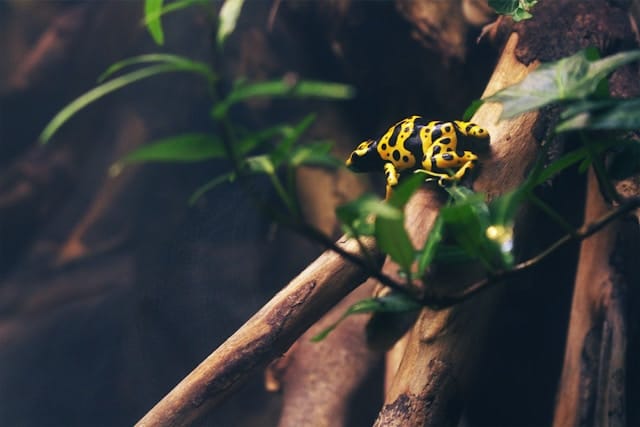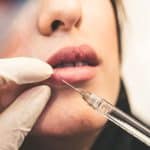As dedicated keepers of various species of exotic fauna, the task of creating a live, bioactive vivarium for your amphibian friends can often seem daunting. The colorful, complex behaviors of poison dart frogs make them an absolute delight to observe. However, providing a habitat that resembles their natural environment is crucial to their health and well-being. In this guide, we’ll explore the intricate process of setting up a live vivarium for poison dart frogs, taking into account vivarium size, substrate layering, humidity control, plant selection, and more.
Selecting the Right Vivarium
The first step in making your amphibious pets feel at home is choosing an appropriate enclosure. Dart frogs aren’t particularly large, but they do enjoy a bit of room to move around. They’re also quite fond of climbing, so height in the vivarium is just as important as floor space.
In parallel : What Are the Best Techniques for Introducing a Rescue Greyhound to a New Home?
When selecting a vivarium, opt for a glass tank that retains humidity well. A 20-gallon tank is usually sufficient for up to three small frogs. However, larger species of dart frogs will require a larger terrarium. The enclosure should have a tight, screening lid to allow fresh air flow and prevent escape attempts. Make sure to keep the vivarium out of direct sunlight to prevent overheating and to maintain the internal temperature between 70-80°F.
Creating the Substrate Layer
Creating a well-structured substrate layer is essential for maintaining a healthy environment. This is because the substrate acts as a drainage layer, keeping the water levels balanced and the humidity at the right level for your dart frogs.
This might interest you : Can You Train a Ferret to Perform Tricks Using Positive Reinforcement?
To start, place a layer of small, porous stones or hydroballs at the bottom of the tank. This will act as the primary drainage layer, helping to avoid standing water that may lead to bacterial growth. Cover this with a thin layer of mesh or weed fabric to prevent substrate mix from falling into the drainage layer.
Next, prepare a mixture of organic topsoil, sphagnum moss, and finely chopped tree fern fiber. This creates a substrate that retains moisture, helps to maintain humidity, and supports the growth of beneficial bioactive organisms.
Planting and Landscaping
A vivarium is more than just a home for your frogs; it’s also an ecosystem for plants. The selection of suitable flora is critical to mimic the natural habitat of your dart frogs. These amphibians thrive among leaf litter and undergrowth in their native rainforests, so it makes sense to recreate such an environment in their vivarium.
Consider using a variety of plants such as bromeliads, ferns, and creeping vines. They’ll provide additional climbing surfaces, as well as hiding spots for your frogs. Additionally, they’ll contribute to maintaining the overall humidity within the enclosure.
Also incorporate a variety of landscaping features such as driftwood, mossy stones, and cork bark for added verticality. Remember to leave enough space for your frogs to leap and explore their new home.
Water and Humidity Control
Poison dart frogs do not need a large water body to swim in like most frogs. However, they do require a high level of humidity. Keep a small, shallow dish filled with dechlorinated water in the enclosure to maintain humidity and allow the frogs to soak if they wish.
The humidity level should stay between 80-100%. It is crucial to monitor and control this. A digital hygrometer can be a helpful tool for this. Regular misting with dechlorinated water will help to maintain humidity and replicate the moist environment these frogs are accustomed to.
Bioactive Setup
Introducing a bioactive setup can greatly reduce the maintenance of your vivarium and improve the overall health of the ecosystem. This involves introducing beneficial invertebrates like springtails and isopods which will not only serve as a supplementary food source but also help in breaking down waste, controlling mold, and promoting plant health.
Just remember to establish your vivarium and allow it to settle for a few weeks before introducing your poison dart frogs. This will allow the plants to root properly, and the bioactive cleanup crew to establish themselves.
Creating the perfect home for your dart frogs may seem challenging, but it’s an immensely rewarding experience. These steps should guide you in creating a thriving, bioactive vivarium that not only caters to the needs of your dart frogs but also recreates a slice of their natural habitat, right in your living room.
Feeding and Care
Caring for poison dart frogs involves more than just setting up their habitat correctly; it also includes providing them with the right diet. These amphibians predominantly feed on small, soft-bodied invertebrates. The primary choice for dart frog keepers is fruit flies. They are readily available, easy to culture at home, and boast a nutritional profile that suits the dietary needs of these creatures.
When feeding your dart frogs, it’s vital always to sprinkle the fruit flies with a fine dusting of calcium and vitamin supplements. These nutrients are essential for the frogs’ health, particularly for the development of strong bones and vibrant skin colors.
You should aim to feed your frogs daily, providing enough flies that they can consume within a few hours. Young frogs require more frequent feeding, usually twice a day, since they are growing. Overfeeding can lead to obesity, which can cause serious health problems, so monitoring the feeding habits of your dart frogs is crucial.
Aside from feeding, remember to clean the vivarium regularly. While the bioactive setup will help in waste decomposition, manual removal of uneaten food and visible waste will ensure a cleaner and healthier environment for your frogs.
Light and Temperature Control
Light and temperature are two critical factors in maintaining a healthy environment for your dart frogs. These amphibians are accustomed to the filtered sunlight and consistent temperatures of their native rainforests, and replicating these conditions will help them thrive.
An exo terra compact top canopy or a similar lighting fixture can be used to provide the necessary light exposure. The lights should be on a timer to mimic a natural day-night cycle, with about 12 hours of light and 12 hours of darkness. However, remember that dart frogs do not need intense lighting, and too much could cause them to become stressed or overheated.
The ideal temperature range for most dart frogs is between 70 to 85 degrees Fahrenheit. Fluctuations in temperature can stress your frogs, leading to illness or even death. Therefore, it’s crucial to monitor the temperature daily using a reliable digital thermometer.
While heating the vivarium may not be necessary due to the frogs’ tolerance of room temperatures, during colder months, a low wattage heat mat can be used. Always place the heat mat on the side of the tank, not the bottom, to avoid overheating and potential harm to your frogs.
Conclusion
Setting up a live vivarium for poison dart frogs can be an exciting project, offering a unique opportunity to create a slice of the rainforest right in your home. It requires careful planning, patience, and commitment, but seeing your dart frogs thrive in an environment that closely mimics their natural habitat is incredibly rewarding.
Remember, the key to a successful dart frog vivarium lies in maintaining the right conditions – from the substrate layering and humidity to plant selection, feeding, and temperature control. By following these guidelines, you can ensure that your poison dart frogs will have a safe, comfortable, and stimulating environment that caters to their needs.
Whether you’re a novice keeper or an experienced hobbyist, it’s always important to continue learning and adapting your care techniques. The world of dart frogs is colorful and complex, and there’s always something new to discover about these fascinating creatures. Happy frogging!






